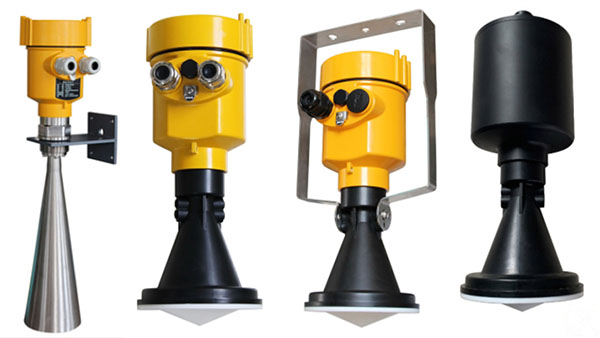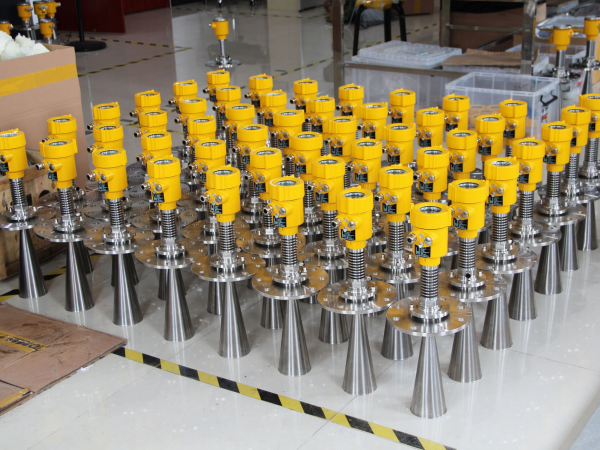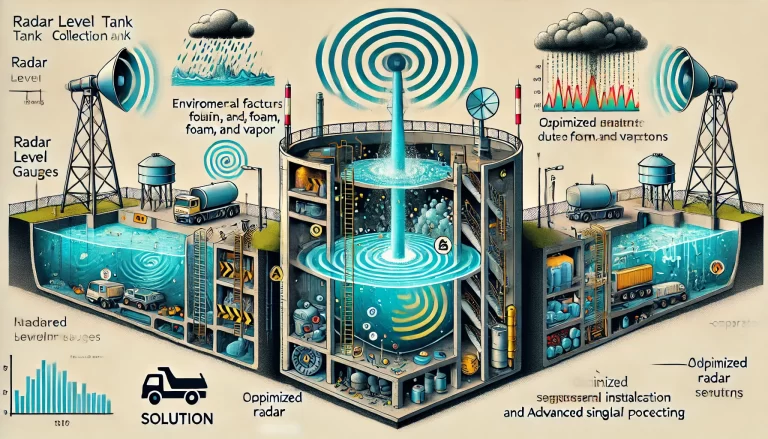Rainwater collection systems play a crucial role in water resource reuse. Accurately measuring the water level in these tanks is essential to ensure the smooth operation of the system. Radar level gauges, a non-contact measurement technology, are widely adopted due to their high precision and reliability. However, they face specific challenges when applied to rainwater collection tanks. This article provides an in-depth analysis of these challenges, along with two illustrative examples.

Challenge 1: Environmental Factors Affecting Radar Signals
Rainwater collection tanks are typically located outdoors, exposing radar level gauges to various environmental conditions. Extreme weather conditions, such as heavy rainfall, high temperatures, or freezing temperatures, can interfere with the propagation of radar waves, reducing measurement accuracy.
Moreover, specific substances within the tanks, such as foam and water vapor, can scatter or absorb radar waves, further complicating measurements. For example, after a torrential downpour, the accumulation of foam in the tank significantly scattered the radar waves. As a result, the radar gauge could not accurately detect the actual water level, leading to a false alarm in the system.
Key Takeaways:
- Radar signals are sensitive to weather changes and environmental factors.
- Foam or vapor inside the tank can cause scattering or absorption of radar waves.
- Ensuring stable measurements may require mitigation strategies during extreme conditions.

Challenge 2: Signal Interference Due to Structural Complexity
Rainwater collection tanks are often designed with multiple compartments, pipelines, and pump stations. These structural elements can interfere with radar wave propagation, producing complex reflections that complicate signal interpretation.
This interference is particularly problematic at low water levels, where radar waves may reflect off the tank walls or other internal structures, generating erroneous signals. For example, in a multi-compartment rainwater collection system, radar waves reflected multiple times between the walls of compartments. As a result, the radar gauge received signals from various paths, making it difficult to distinguish between reflections from the actual water surface and those from walls or other obstacles. This misinterpretation led to significant measurement errors.
Key Takeaways:
- Complex tank structures create multiple reflections, complicating signal analysis.
- Radar signals may falsely register structural elements as water levels.
- Accurate measurements require addressing interference from tank geometry.

Mitigating Challenges for Reliable Measurements
Despite these challenges, several measures can enhance the performance of radar level gauges in rainwater collection systems:
- Optimal Installation: Position the radar sensor in locations that minimize interference from walls or internal structures.
- Frequency and Modulation Optimization: Choose radar waves with appropriate frequencies to reduce the impact of environmental factors.
- Advanced Signal Processing Algorithms: Employ modern algorithms to filter out noise from structural interference and environmental disturbances.
Implementing these strategies can improve the accuracy and reliability of measurements, ensuring that the rainwater collection system operates efficiently under varying conditions.

Conclusion
Radar level gauges offer numerous advantages, including non-contact measurement and high precision. However, when applied to rainwater collection systems, environmental factors and structural complexities present significant challenges.
By adopting tailored solutions, such as optimized installation and advanced signal processing techniques, these challenges can be effectively mitigated. This ensures accurate liquid level measurement, contributing to the smooth and efficient operation of rainwater collection systems.
